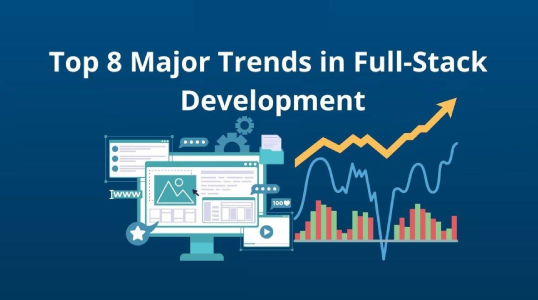My dfdrgdrgdrgg
Building a Full Stack Web Application: A Step-by-Step Guide

The world of full stack development is ever-evolving, with new trends and technologies emerging each year. As we move into 2024, several key trends are set to shape the future of full stack development. This blog explores the most significant trends to watch and how they can impact your work as a full stack developer.
1. The Rise of Micro Frontends:
Microservices have been popular on the backend for years, and now the micro frontend architecture is gaining traction. This approach breaks down the frontend monolith into smaller, manageable pieces, allowing teams to develop, deploy, and scale parts of the frontend independently. Tools like Single-SPA and Module Federation are becoming increasingly popular for implementing micro frontends.
2. Serverless Computing:
Serverless architecture continues to grow in popularity, enabling developers to build and run applications without managing server infrastructure. Services like AWS Lambda, Azure Functions, and Google Cloud Functions allow you to write and deploy code in response to events. This trend helps reduce operational overhead and allows for more scalable and cost-effective applications.
3. Jamstack Architecture:
Jamstack, which stands for JavaScript, APIs, and Markup, is transforming how web applications are built. By decoupling the frontend from the backend and using static site generators, developers can create fast, secure, and scalable applications. Tools like Next.js, Gatsby, and Nuxt.js are leading this trend, making it easier to build performant web applications.
4. AI and Machine Learning Integration:
AI and machine learning are becoming integral to modern applications, providing capabilities like personalization, recommendation engines, and predictive analytics. Full stack developers are increasingly integrating AI and ML models into their applications using tools and frameworks like TensorFlow.js, PyTorch, and Microsoft’s Azure AI services.
5. Enhanced DevOps Practices:
DevOps continues to evolve, with a focus on improving CI/CD pipelines, infrastructure as code (IaC), and automation. Tools like GitHub Actions, GitLab CI/CD, Terraform, and Ansible are enhancing collaboration between development and operations teams, leading to faster and more reliable deployments.
6. WebAssembly (Wasm):
WebAssembly is gaining momentum as a way to run high-performance applications in the browser. Wasm allows code written in languages like C, C++, and Rust to be compiled into bytecode that runs in the browser, offering near-native performance. This trend opens up new possibilities for web applications, including complex simulations, games, and other performance-intensive tasks.
7. GraphQL Adoption:
GraphQL is becoming the preferred choice for API design, offering a more efficient and flexible alternative to REST. With GraphQL, clients can request only the data they need, reducing over-fetching and under-fetching issues. Tools like Apollo and Relay are simplifying the integration of GraphQL in both frontend and backend applications.
8. Progressive Web Apps (PWAs):
PWAs continue to blur the line between web and native applications, offering offline capabilities, push notifications, and improved performance. As more businesses adopt PWAs, tools and frameworks like Workbox and PWA Builder are making it easier to build and deploy these apps.
9. Edge Computing:
Edge computing is bringing computation and data storage closer to the location where it is needed, reducing latency and improving performance. This trend is particularly relevant for IoT applications, gaming, and real-time data processing. Platforms like Cloudflare Workers and AWS CloudFront are leading the way in edge computing solutions.
10. Continued Evolution of JavaScript Frameworks:
JavaScript frameworks and libraries are continuously evolving to offer better performance, developer experience, and capabilities. React, Vue, and Angular remain popular choices, but newer frameworks like Svelte and Solid.js are gaining attention for their innovative approaches and performance benefits.
Conclusion: Staying up-to-date with the latest trends in full stack development is essential for maintaining a competitive edge and delivering cutting-edge applications. By embracing these trends and continuously learning, full stack developers can build more efficient, scalable, and innovative solutions in 2024 and beyond.